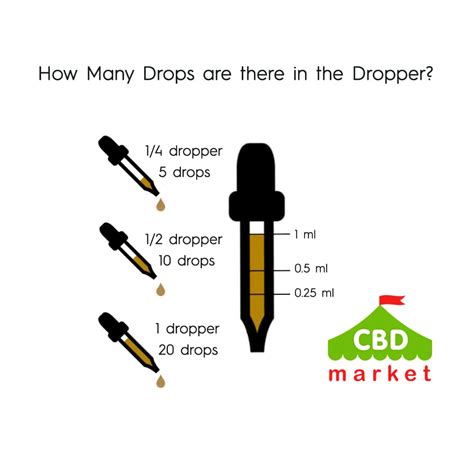How Many Ml In A Dropper
listenit
Apr 03, 2025 · 4 min read

Table of Contents
How Many mL in a Dropper? A Comprehensive Guide to Dropper Volume and Measurement
The seemingly simple question, "How many mL in a dropper?" reveals a surprisingly complex answer. The volume of liquid a standard dropper can hold isn't standardized, varying significantly based on the dropper's design, the liquid's viscosity, and even the user's dispensing technique. This comprehensive guide dives deep into the nuances of dropper volume, providing you with the knowledge to accurately measure and administer liquids using droppers.
Understanding Dropper Variability: Why There's No Single Answer
Unlike precise measuring tools like syringes or graduated cylinders, droppers offer a less accurate method of measuring liquids. Several factors contribute to this imprecision:
1. Dropper Design: A Multitude of Shapes and Sizes
Droppers come in a wide array of shapes and sizes. Some have bulbous reservoirs, while others are slender and cylindrical. The size of the bulb and the bore (internal diameter) of the pipette directly impact the volume it can hold. A larger bulb and wider bore naturally allow for a larger volume.
2. Liquid Viscosity: Thickness Matters
The viscosity, or thickness, of the liquid significantly influences the volume dispensed. Thick, viscous liquids like honey or syrups will fill the dropper differently than thin, watery liquids like water or alcohol. A viscous liquid will cling to the dropper's interior walls, resulting in a smaller effective volume.
3. Dispensing Technique: User Variability
The technique used to fill and dispense the liquid also introduces variability. Some users might squeeze the bulb more forcefully, expelling more liquid. Others might only partially squeeze, leading to inconsistent dispensing. The angle at which the dropper is held also affects the dispensed volume.
Common Dropper Sizes and Approximate Volumes
While a precise mL measurement for a generic dropper is impossible, we can estimate based on common dropper types:
1. Standard Eyedroppers: 0.5 mL to 1 mL
Many standard eyedroppers, often found in medicine bottles or essential oil containers, typically hold between 0.5 mL and 1 mL. However, this is a very rough estimate. Relying on these droppers for precise measurements should be avoided.
2. Larger Droppers for Essential Oils: Up to 2 mL or More
Droppers included with larger essential oil bottles frequently have a greater capacity, sometimes exceeding 2 mL. Again, this is an approximation, and the actual volume can differ between manufacturers.
3. Laboratory Droppers: Greater Accuracy, but Still Varies
Laboratory droppers are generally more consistent than household droppers. However, they still aren't designed for highly accurate measurements. While some laboratory droppers are calibrated, you'd still need a separate measuring device for precise measurements.
How to Improve Accuracy When Using Droppers
While droppers aren't ideal for precise measurements, you can improve accuracy with a few strategies:
1. Use a Calibrated Dropper: The Gold Standard
If precision is critical, use a calibrated dropper specifically designed for accurate dispensing. These droppers often have markings on the side indicating volumes.
2. Count the Drops: A Relative Measurement
For consistency, count the number of drops dispensed. Remember, the number of drops per mL will vary depending on the liquid and dropper type. This only provides a relative measure, useful for consistent dosing within the same context, not for accurate measurements across different liquids or droppers.
3. Multiple Measurements: Compensating for Inaccuracy
To minimize inaccuracies, take multiple measurements. Dispense the liquid into a small graduated cylinder or other precise measuring instrument. Average the results of multiple measurements to obtain a more reliable estimate.
4. Transferring Liquids: A Safer Approach
For many applications, directly transferring liquid from a larger container to a smaller one (using a small funnel or pipette) is often a more accurate method than using a dropper.
5. Understanding the Context: Not all Applications Demand Precision
Consider the application. In many cases, precise measurements aren't necessary. For example, adding a few drops of food coloring to a cake batter doesn't require exact measurements. However, for medical applications or scientific experiments, precision is paramount.
When Precision is Critical: Alternative Measurement Methods
In scenarios requiring precise measurements, avoid relying on droppers. Instead, consider these options:
1. Graduated Cylinders: For Accurate Volume Measurement
Graduated cylinders are cylindrical containers with markings indicating specific volumes. They provide a far more accurate measurement than droppers.
2. Syringes: High Precision for Precise Liquid Delivery
Syringes with marked calibrations offer excellent precision for dispensing small to moderate liquid volumes.
3. Micropipettes: For Microliter Precision
Micropipettes are specifically designed for delivering extremely small volumes, often in microliters (µL). They are essential for applications requiring very high precision.
Conclusion: Dropper Volume - Context is Key
The answer to "How many mL in a dropper?" depends heavily on the context. While a general estimate for a standard eyedropper might be between 0.5 mL and 1 mL, this is not a definitive answer. Dropper design, liquid viscosity, and user technique all contribute to significant variability. For accurate measurements, utilize calibrated droppers or alternative instruments such as graduated cylinders or syringes. Remember, understanding the level of precision required for your application is crucial in selecting the appropriate measurement method. Don't rely on droppers for situations demanding accuracy, and always prioritize safety and precision when dealing with medications or scientific experiments.
Latest Posts
Latest Posts
-
What Are The Natural Resources In The Northeast Region
Apr 04, 2025
-
What Is The Negative Square Root Of 64
Apr 04, 2025
-
Anything That Takes Up Space And Has Mass Is
Apr 04, 2025
-
How Many Mm Are In 50 Cm
Apr 04, 2025
-
3x 2y 16 In Slope Intercept Form
Apr 04, 2025
Related Post
Thank you for visiting our website which covers about How Many Ml In A Dropper . We hope the information provided has been useful to you. Feel free to contact us if you have any questions or need further assistance. See you next time and don't miss to bookmark.
